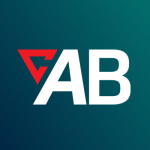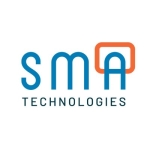What is our primary use case?
The primary use case for using Workload Automation is the automation of applications in different cases for business or data warehouses, controlling programs, and ERP systems (like SAP). We have also began to use it for data center automation for provisioning of virtual infrastructure.
How has it helped my organization?
One of the benefits is we have one view of our automated things. We do not have different automated silos. We have one view for our operators, which are doing things 24/7, and need just one interface, not multiple ones.
What is most valuable?
The main features are the enormous, stripped function, which the software provides. Also, its many different agents which are supported in different platforms.
What needs improvement?
After the merger, it is getting more American. Now, they do not have support in French and have limited German documentation. This is a critical problem for companies who have older generations who did not have English in school.
The big pain points are the AWI and the web interface. There needs to be a change with these features.
Buyer's Guide
Automic Automation
November 2025
Learn what your peers think about Automic Automation. Get advice and tips from experienced pros sharing their opinions. Updated: November 2025.
872,869 professionals have used our research since 2012.
For how long have I used the solution?
More than five years.
What do I think about the stability of the solution?
I am a long-time customer of the solution. The older versions were very stable. Then, there was a switch to versions eight and version nine. This was a few years ago.
I am happy that Automic understands the needs of their customers and changed their development process, because now, the application is very stable.
What do I think about the scalability of the solution?
It is very scalable. We have in one environment one and a half to two million executions a day. We are one of their bigger customers.
How are customer service and support?
There used to be custom support from Germany, which was one of the biggest features. There was a change. It was German speaking support. That was one of the things, which I am sorry to say is getting worse. They have different support centers now, and the support is worse, not better.
I understand why there was a change. There were different mergers with other companies. There were more products, like the release automation or service orchestration. There are many platforms which are supported. It is very hard for the support to support the whole thing.
What about the implementation team?
When we build a new environment, I am involved. Workload Automation environment setup is smooth, but it could be smoother.
One thing which is not so smooth is CA Release Automation. When doing a PoC of CA Release Automation, and it is not so smooth to install because of the different communications between these components.
What was our ROI?
Every time there is a task which must be repeated, the solution can reduce costs. When you do it one time manually, or when you do it perhaps two times manually, it is okay. If you have to do it more than this, because of the automation, you can reduce costs.
Which other solutions did I evaluate?
Possibly IBM, because we are a big IBM customer.
What other advice do I have?
You should have a look at Automic, but also at their competition. There are a few things which they need to change. I would not have said this a few years ago, but now they need to improve.
Disclosure: PeerSpot contacted the reviewer to collect the review and to validate authenticity. The reviewer was referred by the vendor, but the review is not subject to editing or approval by the vendor.
















The amount of plugins and action packs available and for various products and technologies, really offers this flexibility.